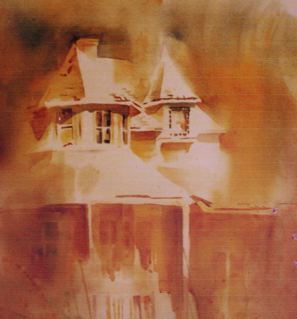
I can’t believe I haven’t entered any events this year. It always seems something else took precedence over talking about us. But it was a good year. In particular,I want to take a moment to express my gratitude for the joy in continue to have in working with my classes. The interesting and delightful people who wish to learn how to become better painters gives me such pleasure. It is a thrill to watch and listen (lead and suggest) as they discover new or dormant resources within themselves. I may gain more than they. And I thank them. How can I ever stop when it is such fun?



 Now that your studio or work area is clean, do you need a project to get you going? How about creating a matrix of your colors?
Now that your studio or work area is clean, do you need a project to get you going? How about creating a matrix of your colors?
 Every once in a while I find I need to get students to re-focus. What leads you to success in much of your life is often a handicap in becoming an artist. Trying harder, “getting it right” is often the way to not getting it at all. Take a deep breath or better, three long slow breaths, and let’s set some new priorities.
Every once in a while I find I need to get students to re-focus. What leads you to success in much of your life is often a handicap in becoming an artist. Trying harder, “getting it right” is often the way to not getting it at all. Take a deep breath or better, three long slow breaths, and let’s set some new priorities.

